On a very dreary, drippy-wet Wednesday last week I attended the first open garden event of the National Garden Scheme’s year held in the delightful private garden of St Timothee, just outside Maidenhead.

Garden owner Sarah welcomed us with coffee and cake, a particularly delicious slice of Orange and Almond. She then proceeded to give us an interesting illustrated talk about what she has growing in her garden at this time of year.
This is not especially a ‘winter garden’ but Sarah feels strongly that during these short and often grey days (and today was no exception) you need plants that catch your eye from the window and inspire you to get out into the garden.

January, Sarah reminded us, is named after the god Janus, the god of archways and doorways who is depicted with two faces looking backwards and forwards, which we can connect to this time of year as we cling on to the growth of the previous year whilst looking forward to what will shoot forth in the coming Spring.

The winter palette you might think is somewhat limited but Sarah explained that the key points to planting are shape, colour and scent; careful consideration should also be given to ‘hotspots’, those places that you regularly walk past or are in your frequent field of vision. Armed with umbrellas we followed her into the garden walking past a colourful Phormium,one of those bright ‘hotspots’

Sarah explained that shape can be observed at several levels; on the ground where the direction of lawns and paths lead, and the configuration of a border itself can be a thing of beauty. At the next level perennials including the huge variety of grasses can provide a lengthy season of interest.

Keeping seed heads are important as they are not only decorative but also provide food for the birds. These dark seed heads are from Phlomis russeliana.

Sarah created this two acre garden a few years ago from a blank canvas but was fortunate to have inherited some mature trees. Inspired by the small book The Wood in Winter by John Lewis-Stemper she emphasised the importance of not only the solid shapes of evergreens like this robust yew,
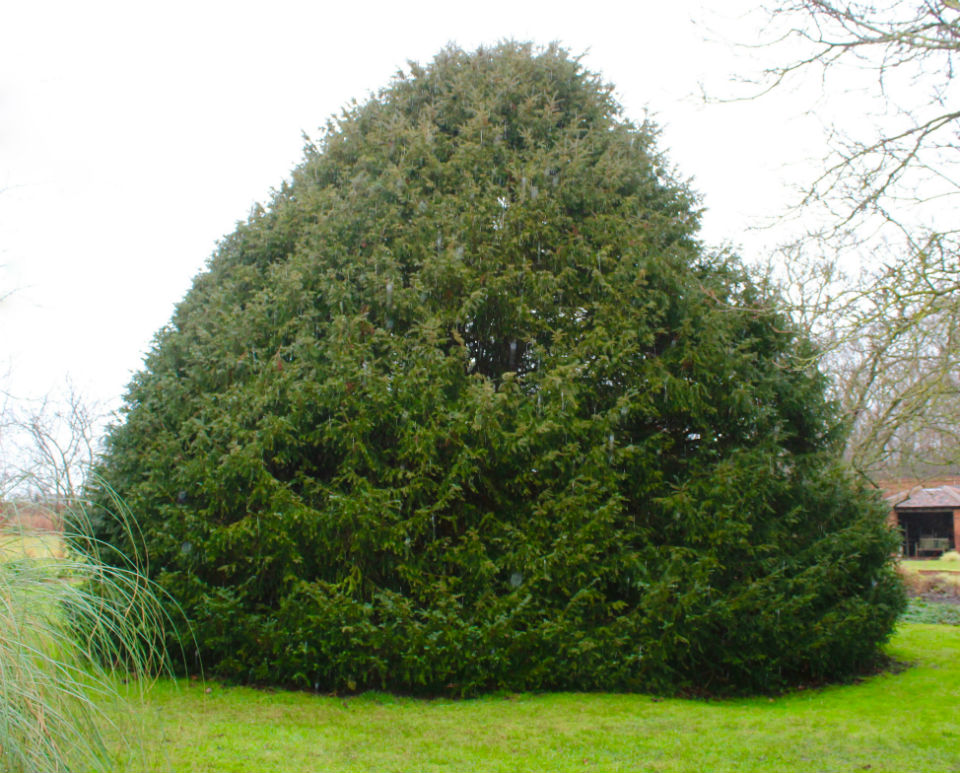
but also deciduous trees either with graceful spreading branches,

or tall and straight as in this line of poplars at the edge of the garden.

Even the fiercely pruned fruit tree growing close to the house could be considered an art form.
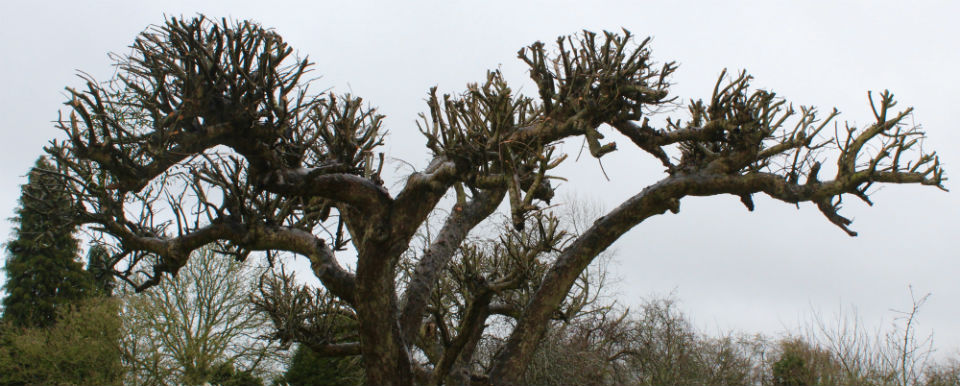
Of course not all trees are naked at this time of year. A recently planted Prunus x subhirtella ‘Autumnalis’, the winter flowering cherry will continue to give much pleasure in future years.

Coloured stems are a great feature of this garden and Sarah feels it is important to underplant; the green of Cornus stolonifera ‘Flaviramea’ and the yellow Eranthis hyemalis the winter aconites, are a striking combination,

and the red Cornus alba ‘Elegantissima’ looks good with the tiny flowers and attractive leaves of Cyclamen coum.

But the real show-stopper of coloured stems, even on a rainy day is Cornus sanguinea ‘Midwinter Fire’ which positively lights up the garden and glows. Sarah comments on how she enjoys the now unfashionable pampas grass Cortaderia selloana ‘Pumila’ and reminds us that plants go out of favour through unnecessary plant snobbery and, as it is here, the right plant in the right place can be very effective.
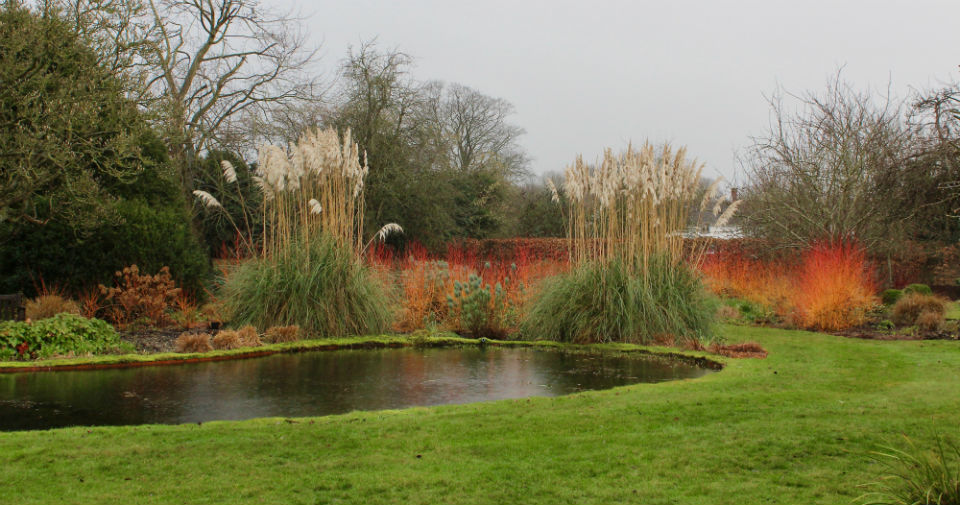
Hellebores are a joy at this time of year, either planted in woodland or in clumps in the border by the wall.

Also peeping through are the Crocus ‘Snow Bunting, Sarah was a little disappointed that they were not further ahead and today the flowers were remaining firmly closed and their fragrance dampened by the rain.

However the Chaenomeles speciosa was undeterred by the rain and the pretty white flowers were a perfect colour against the brick.

A simple knot garden adds great charm to the garden; planted with evergreen box and the silvery stems of Perovskia ‘Blue Spire’ it looks good all year round.
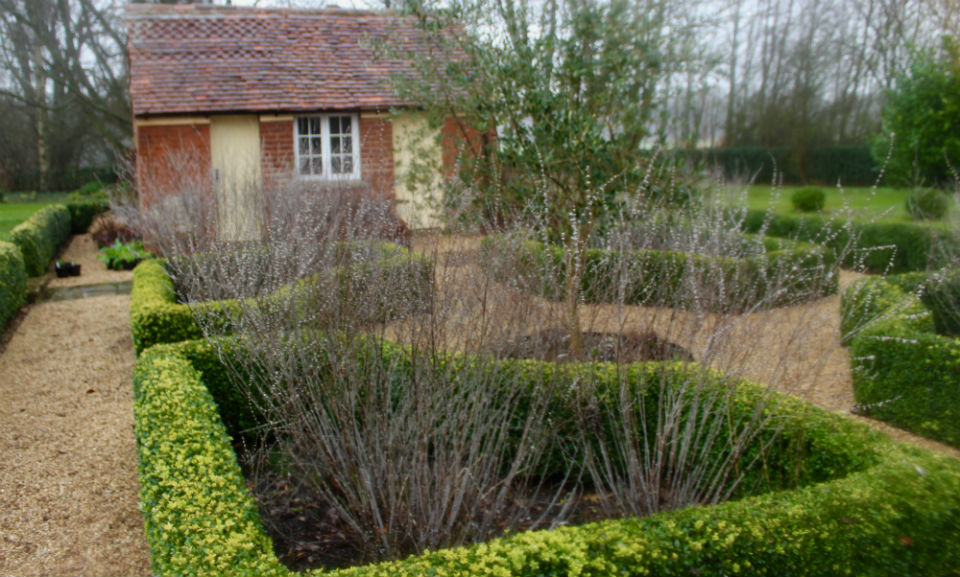
Box balls of various sizes are dotted around the garden; a focus point they also outline an entrance to a path or highlight the corner of a bed.
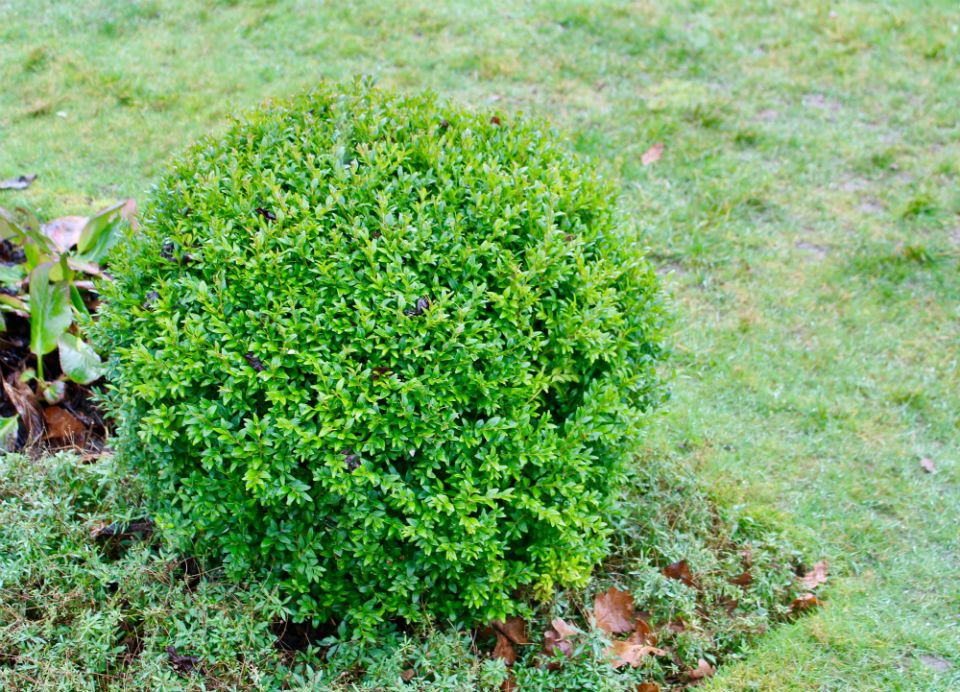
I love compost and leaf bins, which of course are an essential part of any garden but these have to be the most ornate I have ever seen.

There are touches of softening the hard landscape, and this ornamental evergreen grass does the trick on the edge of the York stone path,

and while we somehow never seem to regard Rosemary as a shrub with winter interest here it is brightening an area by the steps.

Finally, Sarah touched on the importance of scent and even on a wet day the Lonicera fragrantissima winter-flowering honeysuckle lifted the spirits and was smelling delicious.

Despite the rain it was a real joy to get out and visit a garden in January. Sarah is passionate about gardening and while she wants to share what she enjoys in her garden, she is careful not to tell us what we ought to be planting in our gardens.
The Winter palette might seem limited but there was enough to see at St Timothee to come away inspired to look once again at those hotspots and to enjoy our gardens a little more in winter.
Perhaps this might be the start of a trend for other garden owners to share their garden in winter.

The garden at St Timothee is open by arrangement for the National Garden Scheme and will also be open for the NGS on 14th and 15th June 2019. Sarah will be giving another talk and walk (a ticketed event) ‘Successional Planting’ on 14th August https://www.ngs.org.uk/find-a-garden/garden/33095/
——-2019——-